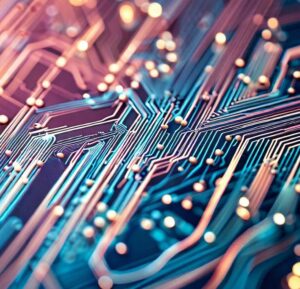In the dynamic world of machine learning, staying updated with the latest features of key tools is crucial. Keras and TensorFlow, two of the most popular frameworks for deep learning, rapidly evolve to cater to the growing needs of the field.
The Newest TensorFlow Features

The introduction of new tools in TensorFlow.js has benefited web developers. The tools seamlessly integrate machine learning into web applications, opening doors for novel web-based machine learning applications.
In terms of the new features added to TensorFlow.js, it’s notable that this is an expanded suite of JavaScript tools allowing developers to bring machine learning capabilities into the programming of websites and online applications. Built specifically for JavaScript developers, TensorFlow.js deploys machine learning models directly to the browser with a script tag or utilizes Node.js for server-side machine learning.
These new tools significantly reduce the complexity of bringing machine learning prototypes to fully functioning web applications. Developers can train models locally or in the cloud and deploy them directly to the web without any concerns of compatibility.
TensorFlow.js introduces the ability to retrain pre-existing machine learning models, a feature called ‘transfer learning’. It allows developers to embed a machine learning feature into an application using far less data for training since the model has already been trained on a significant amount of data.
Additionally, support for WebGL has been added, and new features were introduced to accelerate the pace of model training and subsequent inference. The WebGL support offers near-native performance speed, which makes it possible to run complex models in real-time, enabling more interactive and responsive applications.
TensorFlow.js also expands its compatibility with other popular JavaScript libraries and frameworks, making integration and deployment on the web easier and more efficient.
The new tools in TensorFlow.js, inspire creativity amongst developers by allowing them to build and deploy machine learning models in JavaScript entirely in the web browser, empowering them to develop novel machine learning applications that can run anywhere on the web.
The Newest Keras Features
In terms of preprocessing data, Keras has now introduced new built-in methods that simplify the process. They not only make the code cleaner and readable but also remove the hassle of manual data handling, making the data ready for model training.
Elaborating more on this, Keras has introduced new powerful preprocessing layers which are standalone, modular, and flexible. These preprocessing layers cover a significant amount of preprocessing tasks required in machine learning pipelines, such as TextVectorization for word encoding, Rescaling for feature scaling, Centering for zero-mean features, and many more. These layers can be included in your model like any other layer, facilitating easy data preprocessing right within the model.
A noteworthy aspect of these new preprocessing layers is that they allow computations to be done on the GPU during model training, hence, increasing training speed. At the same time, it also ensures that preprocessing will be the same during inference time, thus improving consistency.
The preprocessing layers introduced in Keras also perform automatic computation of input shapes, which means you don’t need to manually specify the shape of input data – further simplifying the implementation process.
Next up is the Keras data adapter which intelligently handles different types of input data with minimal user configuration. By automatically determining the appropriate data handling strategy based on the type of input provided, it eliminates the need to manually format the data, thereby reducing the complexity of data preprocessing.
These enhancements in Keras in terms of data preprocessing have not only simplified the process of preparing data for model training but have also resulted in cleaner and more maintainable code, making the life of developers considerably easier.
Impact of these Updates on the Machine Learning and Deep Learning Communities
The updates rolled out by TensorFlow and Keras have had extensive impacts on the machine learning and deep learning communities.

TensorFlow’s enhanced Keras Functional API has simplified the model building process significanltly. Before these updates, building complex models demanded intricate architecture definition and manual fine-tuning. The new user-friendly interface simplifies the process through the use of modular building blocks. This not only helps individuals and researchers in prototyping ideas quickly, but also greatly benefits larger teams that often need to collaborate and iterate on model architectures.
In combination with TensorFlow Extended (TFX), developers now have a full pipeline platform that ensures model consistency during deployment in varying environments. This is particularly beneficial for businesses that need to deploy models in real-world scenarios and require adherence to strict accuracy standards across multiple platforms.
The enhancements to TensorFlow Lite have made machine learning more accessible and handy for mobile and edge devices. The focus on optimization brings machine learning applications closer to end users and opens up a new realm of possibilities for real-time, on-device machine learning applications. This is particularly useful for applications that require quick responses or those that operate in environments with limited connectivity.
On the other side, the latest Keras updates have effectively lowered the barriers to performing state of the art machine learning. The introduction of built-in preprocessing methods has simplified a process that was traditionally a time-consuming and error-prone task. It encourages more developers to adopt machine learning, as it gives them the ability to concentrate on model design and tuning, rather than getting bogged down with data preprocessing. The enhancements to model visualization tools play a significant role in improving model performance and in enabling more precise adjustments to these models.
The improved support for multi-GPU and distributed training in Keras is another significant step in making deep learning more scalable. This has a huge impact on large scale deep learning projects, where managing computational resources is a crucial factor considering the increasing complexity and size of modern models.
Looking forward, we can expect TensorFlow and Keras to continue evolving and fostering innovations in machine learning. The focus will likely be on improving user-friendliness and computational efficiency, which would make machine learning and deep learning more accessible and powerful. Perhaps we will see more specialized tools supporting more complex models, more efficient training algorithms, or new platforms making it easier to deploy machine learning models in varied environments.